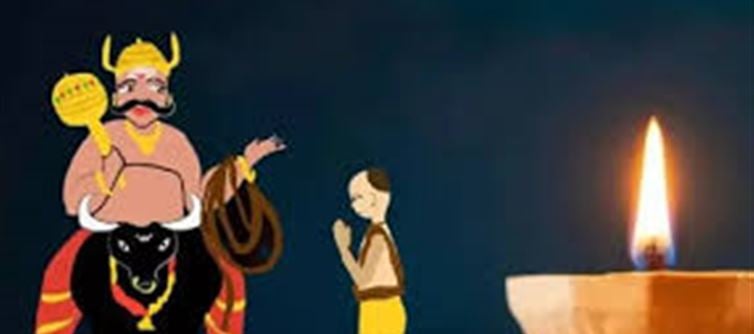
Narak Chaturdashi, also known as Choti Diwali, is one of the significant celebrations leading up to Diwali in Hindu tradition. It falls on the 14th day of the Kartik month of the Hindu lunar calendar, just one day before Diwali. In 2025, Narak Chaturdashi will be celebrated on November 9th.
Why is Narak Chaturdashi Celebrated?
Narak Chaturdashi commemorates the victory of Lord Krishna over the demon Narakasura. According to Hindu mythology, Narakasura was a powerful demon who caused immense trouble to the gods and people on Earth. He kidnapped 16,100 women and caused terror across the world. Lord Krishna, along with his wife Satyabhama, killed Narakasura in a fierce battle and liberated the women. The victory symbolized the triumph of good over evil.
In honor of this victory, Narak Chaturdashi is observed with great enthusiasm and devotion. This day is considered highly auspicious for spiritual cleansing, symbolizing the removal of darkness and evil from the world.
Religious Significance of Narak Chaturdashi
Narak Chaturdashi holds deep spiritual and cultural significance:
1. Victory Over Evil: Narak Chaturdashi celebrates the triumph of good over evil. Just like Lord krishna defeated Narakasura, people believe that lighting lamps and celebrating this day helps drive away darkness and negative energies from one's life.
2. Spiritual Cleansing: This day is considered an auspicious time for physical and spiritual cleansing. people wake up early in the morning and take a special ritualistic bath, called the "Uttarani Snan", using fragrant oils and herbs. This bath is believed to wash away sins and impurities, purifying the body and soul for the upcoming diwali celebrations.
3. Symbol of Joy and Prosperity: Narak Chaturdashi signifies joy, prosperity, and happiness. The day is marked with the lighting of diyas (oil lamps) and bursting of fireworks, marking the end of evil forces and the arrival of goodness and light.
Rituals of Narak Chaturdashi
1. Early Morning Bath: The day begins with a special early morning bath, which is considered highly beneficial for mental and physical well-being. The use of kumkum, turmeric, and rose water in the bath signifies purity and devotion.
2. Worship of Lord Krishna: Devotees offer prayers to Lord Krishna and Satyabhama, thanking them for the defeat of Narakasura. Lord Krishna's image is often depicted riding on his chariot, carrying his Sudarshan Chakra.
3. Lighting Diyas: Just like diwali, Narak Chaturdashi also involves lighting diyas (oil lamps) to ward off evil and spread light. The bright lights symbolize the victory of good over darkness and ignorance.
4. Burning of Firecrackers: Fireworks and crackers are also a big part of Narak Chaturdashi. It’s believed that bursting crackers on this day signifies the banishment of evil and the welcoming of good luck and positive energy.
Narak Chaturdashi and Its Connection to Diwali
Narak Chaturdashi is seen as a precursor to diwali, which is celebrated on the Kartik Amavasya. While diwali is a festival of wealth and prosperity, Narak Chaturdashi is celebrated as a day of cleansing, both spiritually and physically, to prepare for the grandeur of Diwali.
While Diwali is primarily focused on Goddess Lakshmi's blessings and wealth, Narak Chaturdashi highlights the importance of self-purification and spiritual growth.
Conclusion
Narak Chaturdashi is a day steeped in cultural and religious significance. It reminds us of the eternal battle between light and darkness, good and evil, and encourages us to remove all negativity from our lives. By observing rituals such as early morning baths, lighting lamps, and offering prayers to Lord Krishna, we invite prosperity, health, and happiness into our lives. As this day is one of the first in the diwali festival series, it sets the tone for the upcoming celebrations, filled with joy, light, and spiritual growth.
Disclaimer:
The views and opinions expressed in this article are those of the author and do not necessarily reflect the official policy or position of any agency, organization, employer, or company. All information provided is for general informational purposes only. While every effort has been made to ensure accuracy, we make no representations or warranties of any kind, express or implied, about the completeness, reliability, or suitability of the information contained herein. Readers are advised to verify facts and seek professional advice where necessary. Any reliance placed on such information is strictly at the reader’s own risk..jpg)




 click and follow Indiaherald WhatsApp channel
click and follow Indiaherald WhatsApp channel